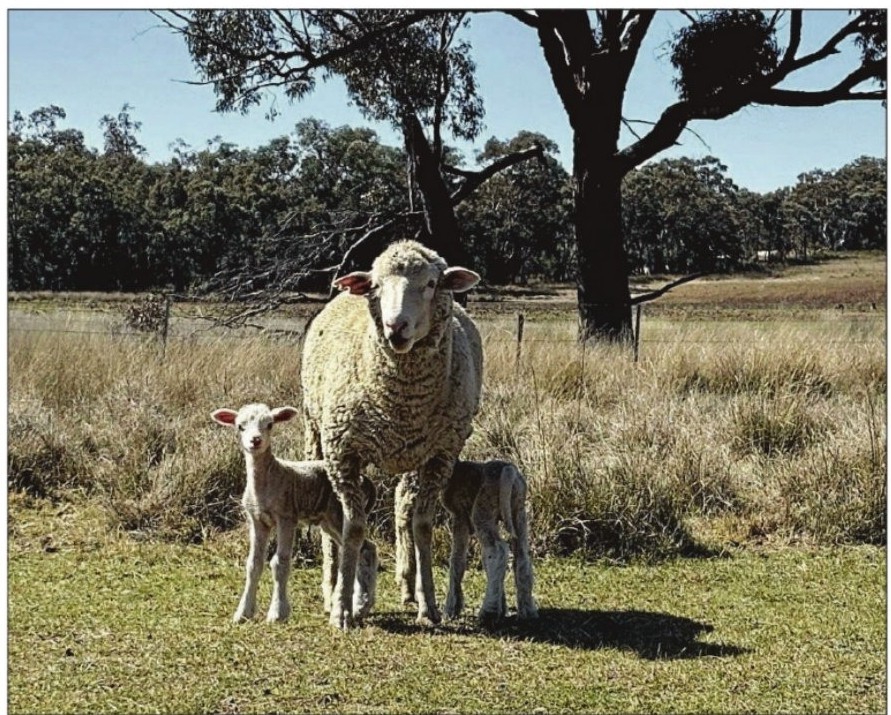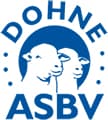Top lamb and wool at Coolah
Article courtesy of ACM (Kylie Nicholls) The Land
THE Dohne breed’s dual-purpose attributes are paying off for Amy Redmond, giving her family’s sheep operation at Coolah a significant boost in productivity.
Balancing her nursing career with life on the 485-hectare farm, Glenthorne, Ms Redmond has taken over the day-to-day management from her grandfather, Robert Pilcher, with support from her uncle, David Pilcher.
For Ms Redmond and her grandfather, the Dohne breed is the perfect fit: hardy, fertile and easy to care for, while also delivering valuable returns for both lambs and wool.
“Pop used to run Merinos and introduced Dohnes more than 10 years ago, and we’ve really just loved everything about them,” Ms Redmond said.
“The biggest advantage is having two income streams, we get solid returns from both the wool and the lambs. “Their fertility and mothering ability is also excellent, this season our scanning results were 180 per cent.”

Amy Redmond, her grandfather Robert Pilcher, and uncle David Pilcher, Glenthorne, Coolah, have been producing Dohnes for more than 10 years and continue to be pleased with the breed’s fertility, growth and hardiness. Picture supplied
Ms Redmond currently runs 650 Dohne ewes, with about 500 to 550 kept in a self-replacing flock. while the remainder are joined to Poll Dorset rams to produce quality first-cross lambs.
Dohne rams are sourced from the Pye family’s Calga stud, Coonamble, with selection focused on growth, structure, and wool quality.
“In recent years, we have been choosing framey rams with strong growth rates, and we’ve successfully achieved that in our flock,” she said.
“Our priority now is wool quality; we’re aiming for soft, bright white wool and a finer micron.
“Our lambs’ fleece is about 18 micron, with the mature ewes averaging 19 to 20 micron, depending on the season.
“We hope to improve this through more rigorous classing and our ram selection.”
All the ewes are joined in March for an August lambing, and pregnancy scanned, with any dry ewes re-joined in October to Poll Dorset rams for a March lambing.
“Using a terminal sire for the off-season joining in October enables us to produce lambs that hit the market in July and August when supply is generally lower,’ she said.
‘We aim to turn off the first-cross lambs at about four months of age.”
Lucerne pastures play an integral role in the production system, providing high-quality feed to finish lambs. Currently, about 43ha is sown on the farm’s creek flats, with plans to add another 10ha.
Grazing oat crops are also grown each year, mainly for lambing ewes to fill the, winter feed gap, but may be used during weaning, depending on seasonal conditions.
Lambs are weaned about two weeks after marking, by which time the oldest are about 3.5-months-old.
After weaning, the lambs will spend three to four weeks on the lucerne with the first draft ready in January after shearing.
At four months, the lambs are turned off at 20 to 25 kilograms dressed weight to supply a niche butcher market.
By six months of age, they generally reach 30kg dressed weight, or about 62kg live weight.
The lambs are marketed through Tooraweenah Livestock and Property, with the lighter lambs going to Binnaway Meat Processing, while the heavier lambs are consigned to Thomas Foods International at Tamworth.
“We’ll monitor their weight and sell them as they reach the specifications. We aim to have all the Dohne lambs sold by May,” Ms Redmond said.
“We prefer to finish our lambs on pastures rather than push them out to heavier weights on grain because of the cost, and we’ve been really happy with the results.”










 Facebook
Facebook YouTube
YouTube Instagram
Instagram